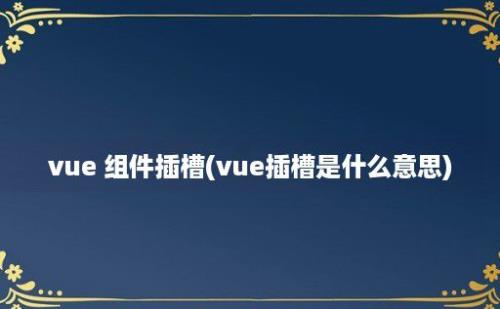> 技术操作
vue组件插槽(vue插槽是什么意思)
导语:简单聊一下vue组件中的插槽

1.具名组件 我们一个组件里需要多个插槽,就需要用到slot的name属性
<!--子组件定义--><div> <header> <slot name=></slot> </header> <main> <slot></slot> </main> <footer> <slot name=></slot> </footer></div><!--父组件--><div> <template v-slot:header> <h1>Here might be a page title</h1> </template> <p>A paragraph for the main content.</p> <p>And another one.</p> <template v-slot:footer> <p>Here some contact info</p> </template></div>2.作用域组件
自 2.6.0 起有所更新。已废弃的使用 slot-scope attribute 的语法在这里 有时让插槽内容能够访问子组件中才有的数据是很有用的
//父组件使用子组件的值<current-user> <template v-slot:default=> {{ slotProps.user.firstName }} </template></current-user//子组件向父组件传递值<span> <slot v-bind:user=> {{ user.lastName }} </slot></span>子组件定义插槽
<template> <div> <!--具名插槽--> <slot name=/> <!--作用域插槽 向父组件传递值--> <slot name= v-bind=&39;vue /> </div></template><script>export default { name:}</script><style></style>父组件使用子组件插槽
<template><div id=> {{msg}} <Solt> <template v-slot:title> <h1>这段内容会填充到子组件中</h1> </template> <!--使用props来接收{value:&39;}值--> <template v-slot:item=> <p>======={{props}}</p> </template> </Solt> </div></template><script>//导入子组件import Solt from &39;export default { name: &39;, data() { return { msg: , name:, type:, list:[&39;,&39;], view:true } }, methods: { }, components: { Solt //必须要定义子组件 }}</script><style>2c3e50; margin-top: 60px;}</style>本文内容由小涵整理编辑!